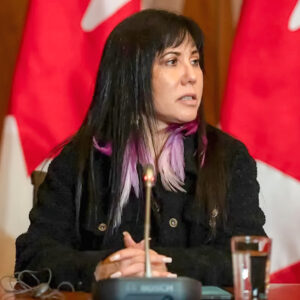
OTTAWA _ Several new deals reached between the federal government and one of its biggest civil-service unions that allow paid time off for victims of domestic violence are the start of a trend, says an academic expert on violence against women and children.
The tentative agreements, reached late last month with the Professional Institute of the Public Service of Canada (PIPSC), include up to 10 paid days of leave to help union members escape their violent partners, a provision the union calls “historic.”
“I think it’s the beginning of a wave,” says Barb MacQuarrie at Western University’s Centre for Research and Education on Violence against Women and Children.
“I expect that we are going to be seeing many more agreements … and also more employer policies that proactively offer leave.”
Canada currently has a patchwork of legislation that provides for domestic-violence leave. Nationally, the government recently passed legislation allowing federally regulated workers who are survivors of such violence to take 10 days off _ five of those days paid and five unpaid.
The change, which includes time off for parents of children who are victims of family violence, comes into force Sept. 1.
Ontario and Manitoba, for instance, each provide five days of paid leave while some other provinces offer fewer days of paid leave or unpaid leave with job protection.
While exact eligibility rules vary across the country, most provisions allow time off to seek medical attention, to move or to seek legal advice or file a police report in connection with domestic violence.
The Philippines was the first country to pay for
domestic-violence leave after creating a law to that effect in 2004.
New Zealand and Australia followed, allowing for 10 days off, paid
in New Zealand and unpaid in Australia.
In Canada, the federal government’s agreements with PIPSC ensure “the workplace is not a barrier to survivors seeking support when facing domestic violence,” union president Debi Daviau said in a statement.
Not only are governments catching onto the need to help their employees escape violence, but private companies are, too, MacQuarrie said.
She pointed to training on the issue she was contracted to do this month for Rio Tinto, the largest mining and metals company operating in Canada.
“This is not a union-led initiative, this is an employer-led initiative,” she said.
“Canada is part of this more international movement towards understanding domestic violence.”
What Statistics Canada refers to as intimate-partner violence _ offences that occur between spouses, common-law partners, people who are dating or in other intimate relationships _ accounted for 30 per cent of all police-reported violent crime in Canada in 2017, the most recent year for which data is available. Women were almost eight in 10 victims.
A survey on prevalence of domestic violence and how it is impacting work, conducted by Western University and the Canadian Labour Congress over a six-month period that ended in June 2014, indicated that Canadian employers lose nearly $78 million annually as a result of domestic violence, and that a third of respondents reported having experienced domestic violence at least once in their lifetimes.
Domestic violence isn’t something that affects people only at home, Daviau said.
“It very frequently follows (employees) into the workplace, whether that’s an abusive spouse, contacting colleagues or showing up in the workplace,” she said in an interview.
The issue was raised by PIPSC as part of contract bargaining in 2016, and working groups were formed to tackle the problem. But this latest tentative agreement marks the first time the government has acknowledged it in a contract as a separate workplace issue that requires giving people paid time off specifically to deal with it, said Daviau.
Achieving the paid-leave provision was an emotional moment, Daviau said, because there was a realization around the table that such allocations would likely take hold in other government departments, and then eventually catch on in workplaces outside the government.
“We shed tears over this gain because it is historical and it’s meaningful,” she said. “And it’s likely to raise the bar for all workers.”
The federal government has reached new tentative contracts with 18 unions so far this year. Results of ratification votes on agreements covering over 60,000 federal employees are expected over the summer.








